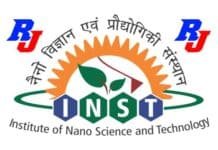Introduction
Desk rejection refers to the process where an academic paper is rejected by a journal editor without undergoing peer review. This often occurs due to various factors related to the quality and relevance of the submission. Understanding desk rejection is crucial for authors aiming to publish their research successfully.
Key reasons why grasping this concept is essential include:
- Enhancing Acceptance Rates: Awareness of potential pitfalls can increase your chances of acceptance.
- Informed Submission Choices: Knowledge helps in selecting journals that align with your work.
This article will cover the following topics:
- Understanding desk rejection and its processes.
- Common reasons for desk rejection and strategies to avoid them.
- Language and presentation issues that can lead to rejection.
- The role of feedback in refining submissions.
By exploring these areas, you can effectively navigate the journal submission landscape in 2024. Additionally, understanding specific fields of study, such as the differences between endocrine and exocrine glands, can also play a significant role in tailoring your research to fit the right journal, thus enhancing your chances of acceptance.
Understanding Desk Rejection
Desk rejection occurs when an editor returns a manuscript to the author without sending it for peer review. This usually happens quickly after submission, allowing authors to redirect their work promptly.
Role of Editors in the Submission Process
Editors play a crucial role in determining whether a manuscript aligns with the journal’s aims and scope. They evaluate submissions based on several criteria, including:
- Relevance: Assessing if the topic fits within the journal’s focus.
- Quality: Evaluating the overall standard of the manuscript, including clarity and structure.
- Timeliness: Considering if the research adds value to current discussions in the field.
For more insights into the editorial process and what editors look for, you can refer to this detailed blog post.
Common Practices in Editorial Reviews
During editorial reviews, editors typically follow these practices:
- Initial Screening: A quick assessment to identify any glaring issues that could warrant immediate rejection.
- Scope Evaluation: Determining whether the manuscript fits within the journal’s thematic areas.
- Quality Assessment: Reviewing aspects such as grammar, formatting, and adherence to author guidelines. You can find a comprehensive guide for authors which outlines common quality assessment criteria.
These evaluations directly influence manuscript quality. Authors should understand that editors are not only gatekeepers but also advocates for maintaining high standards in academic publishing. Engaging with editor feedback can provide valuable insights into improving your submission for future attempts. Recognizing these processes enhances an author’s ability to produce work that meets publication expectations.
However, if a manuscript is desk rejected, it’s important for authors to remember that this decision is not always final. There are instances where appealing an editor’s decision may be warranted. For guidance on how, when, and why to appeal such decisions, consider reading this article on appealing an editor’s decision.
Common Reasons for Desk Rejection and How to Avoid Them
Mismatch with Journal Scope
A fundamental reason for desk rejection lies in the scope of the journal. Each journal has specific aims and focuses that guide their selection of articles. If your research does not align with these parameters, it may be rejected outright.
Tips for Selecting Appropriate Journals:
- Review the journal’s aims and scope on their website.
- Analyze recent publications to gauge the types of articles they accept.
- Consider using journal finder tools, which can help match your work to suitable journals based on keywords and research areas.
Poor Manuscript Preparation
The quality of your manuscript plays a significant role in the acceptance process. Incomplete or poorly organized submissions often lead to desk rejection.
Elements of a Well-Prepared Manuscript:**
- Adherence to author guidelines, which outline formatting, structure, and submission criteria.
- Inclusion of essential components such as an abstract, introduction, methods, results, and discussion.
- Proper formatting of figures, tables, and references.
Failure to follow these guidelines can result in immediate rejection.
Lack of Novelty or Significance
Publishers seek research that contributes new findings or perspectives within a field. A lack of novelty can trigger desk rejection.
Defining Novelty in Research:**
- Examine existing literature to identify gaps your research addresses.
- Ensure that your work proposes innovative solutions or insights that advance current understanding.
Effectively Communicating Significance:**
- Articulate your statement of novelty clearly in your abstract and introduction.
- Highlight the broader implications of your findings for both the academic community and practical applications.
Ethical Standards Violations
Adhering to ethical standards is paramount in academic publishing. Violations related to authorship disputes, plagiarism, or data fabrication can result in immediate desk rejection.
Understanding Ethical Guidelines in Publishing:**
- Familiarize yourself with the publication ethics outlined by organizations like COPE (Committee on Publication Ethics).
- Ensure transparency regarding funding sources and conflicts of interest.
Ethical breaches not only harm your chances with one journal but can also damage your reputation as a researcher across the board. Taking proactive steps to ensure compliance is critical for successful submissions.
Additionally, if you’re looking for career advancement opportunities such as Postdoctoral Fellowships, it’s essential to ensure that your research is published successfully by avoiding these common pitfalls.
Language and Presentation Issues and How to Improve Them
Clear language and effective presentation are critical components of a successful manuscript. Poorly written papers often face desk rejection due to misunderstandings or misinterpretations caused by unclear writing. To enhance your submission quality, consider the following aspects:
Importance of Clear Language
- Clarity: Ensure that your ideas are communicated clearly. Complex sentences can obscure meaning.
- Conciseness: Avoid unnecessary jargon and wordiness. Aim for straightforward expression of your ideas.
- Engagement: A well-written manuscript engages readers, allowing them to focus on your research findings rather than struggling with language.
Tools and Resources for Language Editing
Utilizing language editing tools can significantly enhance the quality of your manuscript. Consider these options:
- Grammarly: This popular tool checks for grammar, punctuation, and style issues.
- Hemingway Editor: Focuses on readability by highlighting complex sentences and passive voice usage.
- ProWritingAid: Offers in-depth reports on writing style, grammar checks, and readability.
Incorporating these tools into your writing process can lead to a more polished draft.
Strategies for Proofreading Manuscripts Effectively
Effective proofreading is essential to catch errors that might lead to desk rejection. Adopt the following strategies:
- Take Breaks: After completing your manuscript, step away for a while before proofreading. This helps you approach the text with fresh eyes.
- Read Aloud: Hearing your words can reveal awkward phrasing or unclear sections.
- Print It Out: Reviewing a hard copy can help you notice errors that might be missed on a screen.
Seeking External Feedback on Writing Quality
Receiving feedback from peers or mentors can provide valuable insights into your manuscript’s clarity and effectiveness. Consider these methods:
- Peer Review: Share your work with colleagues who can critique it from a reader’s perspective.
- Professional Editing Services: Hiring an editor with experience in academic writing can improve both language and structure significantly.
By prioritizing clear language and effective presentation, you will reduce the likelihood of desk rejection related to writing issues. These enhancements not only improve readability but also elevate the overall quality of your research communication.
Understanding specific terminology in your field is also crucial. For instance, in healthcare research, it’s important to grasp the subtle differences between terms such as disease and disorder, as this knowledge can significantly enhance the clarity of your manuscript’s content.
The Role of Feedback in Improving Submissions and Getting Published Successfully in 2024
Constructive feedback is essential for improving the quality of manuscripts. By interacting with peers and editors, authors can gain valuable insights that greatly enhance their submissions.
Importance of Constructive Feedback
- Peer Review: Sharing your manuscript with colleagues before submission can uncover blind spots. They may highlight areas for clarification or suggest additional literature to consider.
- Editor Insights: Understanding the editor’s perspective is invaluable. Editors often have extensive experience and can identify common pitfalls that lead to desk rejection.
Utilizing Feedback Effectively
To maximize the benefits of feedback, consider these strategies:
- Seek Specificity: Encourage reviewers to provide detailed comments rather than general remarks. This specificity helps you address precise concerns effectively.
- Prioritize Changes: Not all feedback is equal. Focus on suggestions that align with your research goals and enhance the manuscript’s clarity and impact.
- Iterative Revisions: Embrace a cycle of revisions based on received feedback. Each iteration should refine the manuscript, making it more robust and aligned with publication standards.
Tips for Publishing Research
Implementing effective feedback mechanisms can streamline the publishing process:
- Create a Feedback Loop: Develop a system where you routinely seek and incorporate feedback at various stages of your writing process.
- Engage in Writing Groups: Joining academic writing groups can foster a collaborative environment where members share constructive criticism and support each other’s work.
- Utilize Online Platforms: Consider platforms that connect authors with editors for professional feedback. This can provide an additional layer of refinement before submission.
Emphasizing constructive feedback allows authors to elevate their manuscripts, addressing potential weaknesses before they reach the editorial desk. By actively seeking diverse perspectives, you position yourself for success in an increasingly competitive publishing landscape in 2024.
Conclusion
Desk rejection can be a significant hurdle in the publication journey. Applying the techniques discussed throughout this guide will empower you to enhance your submissions in 2024. Focus on these key strategies:
- Align your research with journal scope: Choose journals that fit your work’s focus.
- Prepare a thorough manuscript: Follow author guidelines meticulously to avoid incomplete submissions.
- Communicate novelty and significance clearly: Highlight what makes your research stand out.
- Maintain ethical standards: Ensure compliance to avoid issues that lead to rejection.
- Refine language and presentation: Utilize editing tools and seek external feedback for clarity.
By addressing these areas, you can significantly reduce the likelihood of desk rejection and increase your chances of getting published. Your commitment to improvement will reflect in the quality of your submissions, ultimately leading to success in the competitive landscape of academic publishing.
FAQs (Frequently Asked Questions)
What is desk rejection in the context of academic paper submissions?
Desk rejection refers to the process where a submitted manuscript is rejected by the editor without being sent for peer review. This typically occurs when the manuscript does not meet the journal’s scope, quality standards, or ethical guidelines.
Why is it important for authors to understand desk rejection?
Understanding desk rejection is crucial for authors as it helps them identify common pitfalls in their submissions, align their research with journal aims, and improve their manuscript quality, ultimately increasing their chances of successful publication.
What are some common reasons for desk rejection?
Common reasons for desk rejection include mismatch with journal scope, poor manuscript preparation, lack of novelty or significance in the research, and violations of ethical standards. Authors should ensure that their work aligns with the journal’s aims and adheres to author guidelines to avoid these issues.
How can authors improve language and presentation in their manuscripts?
Authors can enhance language and presentation by utilizing language editing tools, proofreading effectively, and seeking external feedback on writing quality. Clear and well-structured manuscripts are less likely to face desk rejection.
What role does feedback play in improving manuscript submissions?
Constructive feedback from peers and editors is vital for enhancing manuscript quality. Authors should actively seek out and utilize this feedback to refine their work before submission, which can significantly increase the likelihood of acceptance.
What steps can authors take to prepare successful submissions in 2024?
Authors should apply learned techniques such as aligning their research with journal scopes, preparing well-structured manuscripts, ensuring novelty and significance in their work, adhering to ethical standards, and actively seeking feedback to improve their submissions for successful outcomes in 2024.








